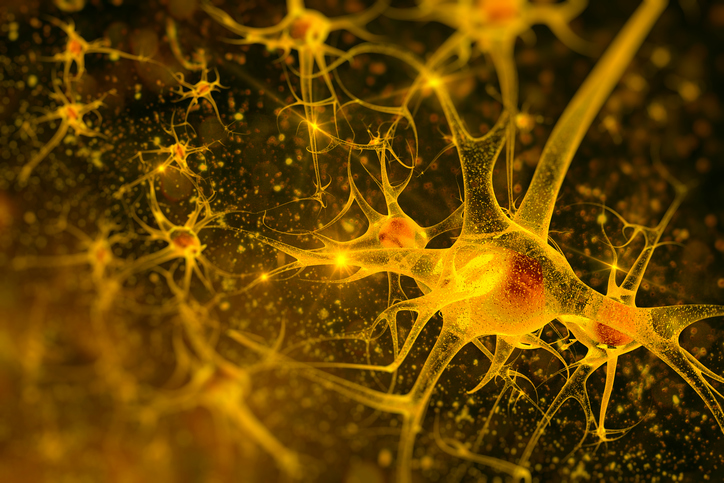
Researchers in the United States and Switzerland have identified neural subcircuits and genetic biomarkers in mice that are linked with a common symptom of depression. The studies, headed by a team at the University of California (UC), Berkeley, identified the gene targets for treating lack of motivation in a mouse model of depression, and say that the findings could provide a springboard for the discovery of biomarkers for other defined symptoms of depressive disorders, and so the development of targeted, precision medicine.
“We think that our study not only has the potential to transform how basic scientists study depression in animals, but the combination of anatomical, physiological, and molecular biomarkers described could lay the foundation for guiding the development of the next generation of antidepressants that are tailored to specific depression symptoms,” said Stephan Lammel, Ph.D., a UC Berkeley assistant professor of molecular and cell biology, and co-corresponding author of the team’s published report in Neuron, which is titled, “Chronic Stress Induces Activity, Synaptic, and Transcriptional Remodeling of the Lateral Habenula Associated with Deficits in Motivated Behaviors.” The Lammel team collaborated with scientists at the University of California, Berkeley, the University of Zurich Brain Research Institute, and the University of California, San Diego.
Depression is the most common mental health disorder in the world, affecting around 9% of the U.S. population every year, and representing one of the top causes of disability in the workplace. “Chronic stress (CS) is a major risk factor for the development of depression in humans,” the authors wrote. However, symptoms of depression can differ significantly between patients who have the same diagnosis, and the lack of a connection between symptoms and treatments is a primary reason for treatment failure. About half of all people with depression fail to respond to medication—which commonly have side effects—or other therapies. “Unfortunately, depression treatment is currently often based on guesswork,” Lammel noted. “No one treatment works for everyone, and no one has objective data on how to differentiate the enormous variability of depression symptoms and subtypes. If we understand specifically how the brain changes in those animals with one certain type of symptom, there may be a way we can specifically reverse these symptoms.”
There are a number of animal models of depression that scientists have used for decades to study depression. In rodent models, the animals may be exposed to chronic stress, which produces at least three of the common symptoms of human depression; anxiety, lack of motivation, and loss of pleasure (anhedonia).
Lammel and Ignas Cerniauskas, who is a UC Berkeley graduate student, work with mouse models of depression that have represented a mainstay of basic research on depression for the past 60 years. But traditional approaches are not ideal. While human patients with depression can show a diverse set of combinations of symptoms, animal models are generally regarded as a “homogeneous population,” the investigators noted, and categorized as either stressed (i.e., depressed) or non-stressed (not depressed). As the authors stated, “… simply dividing animals into ‘stressed’ and ‘non-stressed’ groups may not account for the diversity of behavioral phenotypes that arise in response to CS exposure.”
Cerniauskas and Lammel wanted to try to find changes in the brain that were associated with each specific symptom. “Unfortunately, depression treatment is currently often based on guesswork,” Lammel commented. ”No one treatment works for everyone, and no one has objective data on how to differentiate the enormous variability of depression symptoms and subtypes. If we understand specifically how the brain changes in those animals with one certain type of symptom, there may be a way we can specifically reverse these symptoms.”
The team’s work has now identified genes in the lateral habenula (LHb) region of the brain that are upregulated in mice that show reduced motivation as a result of chronic stress. Interestingly, this brain region in mice isn’t associated with other depression symptoms, including anxiety or anhedonia. The researchers focused on the lateral habenula in response to a recent small clinical study in which depressed patients who were resistant to conventional therapy displayed improvements in their symptoms following electrical stimulation of this area of the brain.
The lateral habenula has received increasing attention in the last few years, partly because it is connected to the dopamine and serotonin systems in the brain, both of which are known to be involved in depression. “Ventral tegmental area (VTA) and dorsal raphe nucleus (DR), which contain large populations of dopamine (DA) and serotoninergic neurons, respectively, represent two major downstream projection targets of LHb,” the investigators explained. The researchers also found upregulated activity in the lateral habenula in the stressed mice that showed particular forms of depressed behaviors. “After chronic stress, there is an increase in the neural activity of the lateral habenula cells—they fire more, they become overactive—and we found that this overactivity was present only in mice that showed very strong deficits in motivated behavior, but not in animals that showed anxiety or animals that showed anhedonia,” Lammel said.
The investigators’ continuing studies also identified specific synapses, cells, and circuits in the lateral habenula that were altered by chronic stress in these particular mice. “… we propose a model in which CS-induced increased burst and tonic firing of LHb/VTA neurons directly and indirectly affects different subtypes of VTA DA neurons, which may produce symptoms that are related to reduced motivation rather than a reduced ability to experience pleasure,” they noted.
In collaboration with Csaba Földy, PhD, assistant professor and a co-director of the Brain Research Institute, and colleagues at the University of Zürich, the team used techniques including single cell RNA sequencing, to evaluate transcriptomic patterns. These results highlighted specific genes that were overexpressed in the chronically stressed mice.
Lammel and Cerniauskas are currently collaborating with the Földy lab on the use of CRISPR-Cas9 editing to see the effects of altering or knocking out these genes, and identify which may be critical to the laberal habenula overactivity that causes lack of motivation. Such insights could potentially lead to the development of drugs that interfere with those pathways, reduce activity of the cells in the lateral habenula, and increase motivation.
“Here, we demonstrate that CS-induced hyperactivity in ventral tegmental area (VTA)-projecting lateral habenula (LHb) neurons is associated with increased passive coping (PC), but not anxiety or anhedonia,” the scientists stated. “Because increased behavior may be related to the pathological motivation impairments seen in major depression in humans, our results may serve as a foundation for the development of symptom-specific therapeutic interventions as well as predictive biomarkers, both of which are severely lacking in current medicine.”
The investigators also plan to look for biomarkers of other symptoms of depression, including anxiety and anhedonia. “Our strategy, one we think all basic researchers should adopt, is to move away from considering depression as a single or homogeneous disease,” Lammel said. “Many physicians already view depression this way, which shows that it is critical to have collaboration between basic and clinical researchers … If we had a biomarker for specific symptoms of depression, we simply could do a blood test or image the brain and then identify the appropriate medication for that patient. That would be the ideal case, but we are far away from that situation right now.”












